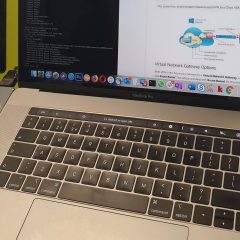Windows XP – Sysprep (for imaging)
KB ID 0000599 Problem A client who we recently did a WDS (Windows 7) install for, needed to image a couple of Windows XP machines, (They had some software that either would not run, or was not supported on Windows 7). They asked me for some documentation on how to do this, it’s been such a long time since I imaged any XP machine, so I took the opportunity to document it properly. Solution Before you begin, be aware you need to...
WAIK (Windows 7) Installing the Supplement for Windows 7 SP1
KB ID 0000450 Problem I’ve been doing some prep work with WDS this week for a client, (I’ve covered Deploying Windows 7 with WDS before). So I went to check if there was a new WAIK as Windows 7 and Server 2008 R2 have had a Service Pack 1 released since last time I deployed windows 7 in bulk. And sure enough, there is an update. (Though the update is for WindowsPE Not the SIM tools I would be using). The Windows®...
Window Server Where is Sysprep
KB ID 0000419 Problem You have a 2008 R2 Server to sysprep, but your not sure where sysprep is. Solution 1. Thankfully in Server 2008 R2, there’s no messing about, its in c:windowssystem32sysprep. (Note: to regenerate a SID don’t forget to tick “Generalize”). Server 2008 – It’s in the same place. Server 2003 – As with Windows XP, you need to get it from the Windows install CD, its in the...
Error – Windows SIM was unable to generate a catalog
KB ID 0000449 Problem Seen while SIM attempts to create a catalog file from a Windows image (.wim) file. This problem occurs if you are trying to create a catalog from from an x86 (32 bit) image, on a machine that is running a x64 bit version of the WAIK. Solution 1. Instead of trying to create a catalog file, you can use the one from the install DVD. 2. You will find the catalog file (with a .clg extension) on the DVD in the sources...
WDS – “The Network Path was not found” when adding an Unattend file
KB ID 0000487 Problem Saw this last week, while trying to use an unattended file for the roll out of some machines with WDS. Every time you try and enter a value you get “The network path was not found” error, no combination of file path or UNC path seems to cure the problem. Solution This is a “work around” not a fix, essentially it will not accept any value you put into the path without throwing and error. If...



